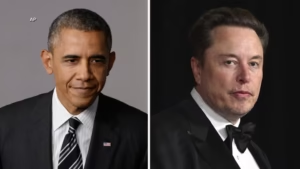As the 2024 U.S. presidential election approaches, new polling data suggests a nuanced perception of former President Donald Trump’s strengths and weaknesses. While many voters view him as a strong leader on immigration, concerns about his economic policies persist. This divide highlights the evolving priorities of the electorate and underscores the challenges Trump faces in his bid to reclaim the White House.
Trump’s Strength on Immigration
Trump has consistently championed a hardline approach to immigration, making it one of his signature policy areas. From his first campaign in 2016, when he vowed to build a wall along the U.S.-Mexico border, to his presidency, which saw strict immigration policies such as the “Remain in Mexico” policy and efforts to curtail asylum applications, his stance has resonated with many Americans who seek stronger border security.
Polling data indicates that voters concerned about immigration largely trust Trump over his Democratic rival. His rhetoric about border control and illegal immigration has remained steadfast, appealing to conservatives and independent voters who believe the Biden administration has failed to address the issue adequately. The recent surge in border crossings and the challenges of processing asylum seekers have only bolstered Trump’s argument that a tougher stance is needed.
One of Trump’s primary talking points in this election cycle is the idea that America needs stricter enforcement to curb what he describes as an immigration crisis. His promise to reinstate policies that restrict illegal crossings and deport undocumented immigrants has gained traction among those who view immigration as a top priority. For these voters, Trump represents a return to order and security at the border.
Economic Concerns and Trump’s Weakness
Despite his strength on immigration, Trump appears to be struggling to reassure voters about his economic policies. During his presidency, the economy saw significant growth, with record-low unemployment rates before the COVID-19 pandemic disrupted global markets. However, his handling of the pandemic and the subsequent economic fallout left a mixed legacy. While some credit him for implementing the Paycheck Protection Program (PPP) and tax cuts, others criticize his administration’s inconsistent messaging on lockdowns and stimulus relief efforts.
The 2024 election presents a different economic landscape. Inflation, interest rates, and concerns about a potential recession have dominated discussions, and Trump has yet to fully articulate a detailed economic plan that distinguishes him from his opponent. His continued focus on grievances over the 2020 election and personal legal battles have distracted from addressing economic concerns head-on.
Voters who prioritize the economy appear more skeptical of Trump’s ability to navigate current challenges. While his tax policies and deregulation efforts were popular among businesses and high-income earners, working-class voters have mixed opinions. Some fear that his approach could benefit the wealthy at the expense of middle- and lower-income Americans.
Biden’s Economic Advantage
Trump’s perceived weakness on economic issues is amplified by President Joe Biden’s ability to point to recent economic improvements. Despite earlier struggles with inflation, job growth has remained steady, and infrastructure investments have begun to take effect. The Biden administration has emphasized policies aimed at reducing costs for families, such as capping insulin prices and expanding manufacturing jobs.
Biden’s messaging frames his presidency as one of recovery and stability, contrasting it with the volatility of the Trump years. While not all voters are convinced, the strategy appears to be resonating with those who prioritize economic stability over sweeping tax cuts or deregulation. This dynamic has led some moderates and independents to lean toward Biden, even if they prefer Trump’s stance on immigration.
The Political Implications
The divide in public opinion presents both opportunities and challenges for Trump. If he successfully capitalizes on voter concerns about immigration and frames the issue as an urgent crisis, he could strengthen his base and attract undecided voters. However, to secure victory, he must also address economic anxieties and present a clear vision for financial recovery and growth.
His campaign strategy will likely involve emphasizing his past economic successes while blaming Biden for current hardships. Yet, simply highlighting past achievements may not be enough. Voters are looking for tangible solutions, and Trump must navigate this expectation carefully. Without a compelling economic plan, he risks alienating key voting blocs who may prioritize financial stability over other concerns.
For Biden, the challenge lies in maintaining economic momentum while countering Trump’s aggressive stance on immigration. His administration must work to reassure Americans that border security and economic stability are not mutually exclusive. If he can effectively communicate this balance, he may be able to neutralize Trump’s advantage on immigration while reinforcing his own economic credentials.
Conclusion
As the 2024 election unfolds, Trump’s strengths and weaknesses highlight the complexities of voter priorities. His dominance on immigration is evident, but economic concerns could prove to be a significant hurdle. Whether he can bridge this gap will determine his electoral prospects. With both candidates seeking to solidify their bases and persuade undecided voters, the coming months will be crucial in shaping the final outcome.







